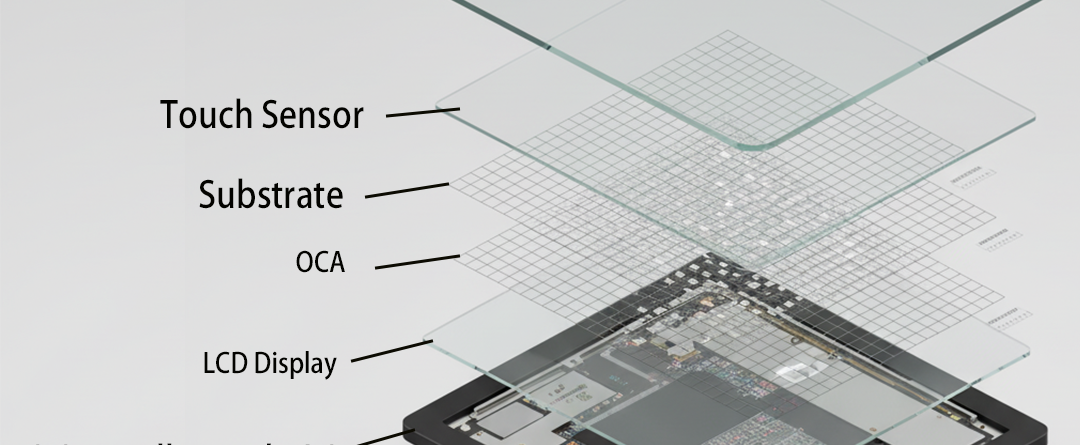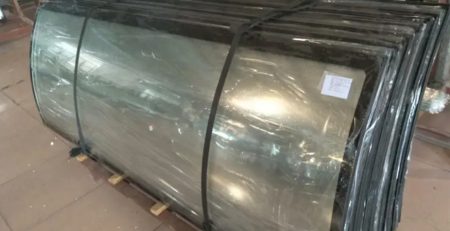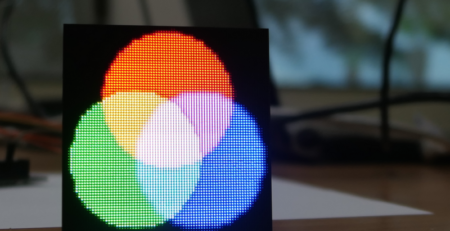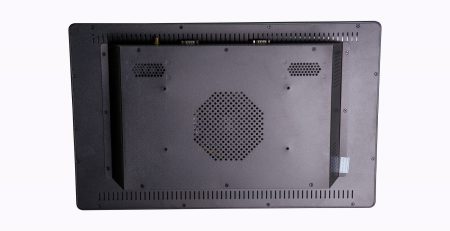Capacitive touchscreens detect the human body’s electrical current. Their multi-layer “sandwich” structure is made of precisely laminated materials. They fall into two types: surface capacitive and the more advanced projected capacitive Touchscreens, which dominate modern devices like smartphones and tablets.
Next, we will take projected capacitive touchscreens as an example to examine their structural components.
Structure of Projected Capacitive Touchscreens
Cover Lens / Glass
- Function: It is the durable outer layer for touch interaction, requiring high hardness, scratch resistance, and optical clarity.
- Manufacturing Process: An underside ink layer conceals internal components; logos are added via printing.
Touch Sensor
- This is the core layer. It consists of a film or glass substrate coated with ITO (Indium Tin Oxide), which is a transparent conductive material.
- Structure: Through precision processes like photolithography, an intricate grid of intersecting electrodes (typically forming diamond-shaped patterns along the X and Y axes) is etched onto this substrate. These electrodes function like tiny capacitors.
Sensor Glass/Substrate
- It serves as the carrier and support for the ITO sensor layer. This can be either a glass substrate or a flexible PET film (which offers lower cost and is commonly used in larger-sized devices).
Optical Clear Adhesive (OCA)
- A special high-transparency double-sided adhesive is used to bond the cover lens and touch sensor seamlessly. It eliminates the air gap, reduces light reflection, and improves light transmittance and display clarity.
LCD display
- The control chip continuously monitors the capacitance changes at all intersection points on the touch sensor. It connects to the sensor via an FPC (Flexible Printed Circuit), calculates the coordinate positions of these capacitance changes, and transmits these digital signals to the device’s main processor.
In addition, a Brief Description of How Projected Capacitive Touchscreens Work
A touch from a finger creates a capacitor with the sensor electrodes, altering the local capacitance. The controller detects this change at a specific intersection to determine the exact (X, Y) coordinates.
Advantages of Capacitive Touchscreens
Compared to earlier technologies such as resistive touchscreens, capacitive touchscreens offer overwhelming advantages:
Exceptional Touch Experience
- High Sensitivity and Smoothness: Capacitive screens respond quickly, offer extremely smooth sliding operations, and support complex gesture controls (such as zooming, rotating, and multi-finger sliding).
- Multi-Touch Support: This is a revolutionary advantage of capacitive touchscreens. They can recognize multiple touch points simultaneously, laying the foundation for rich interactive experiences (e.g., two-finger zooming of images, gaming controls).
Excellent Durability and Reliability
- Wear Resistance: The surface is made of a hard glass cover lens, which is highly scratch-resistant and maintains its integrity without scratches under normal usage.
- Resistance to Dust and Moisture Interference: With excellent sealing, surface contaminants (such as water droplets or oil stains) have minimal impact on touch accuracy (though wet-hand operation may become less responsive).
Exceptional Display Quality
- High Light Transmittance (up to 90%): Each layer of the material offers extremely high transparency, making the screen appear clearer and more vibrant with almost no “viewing through a layer of paper” effect (compared to resistive touchscreens, which typically have only about 85% light transmittance).
- High Contrast Ratio: Less light reflection for a clearer and more vivid display.
User-Friendly Operation
- No need for forceful pressing: Recognition is achieved with a light touch or even hovering (on certain models), making operation effortless and natural. This eliminates finger fatigue even after prolonged use.
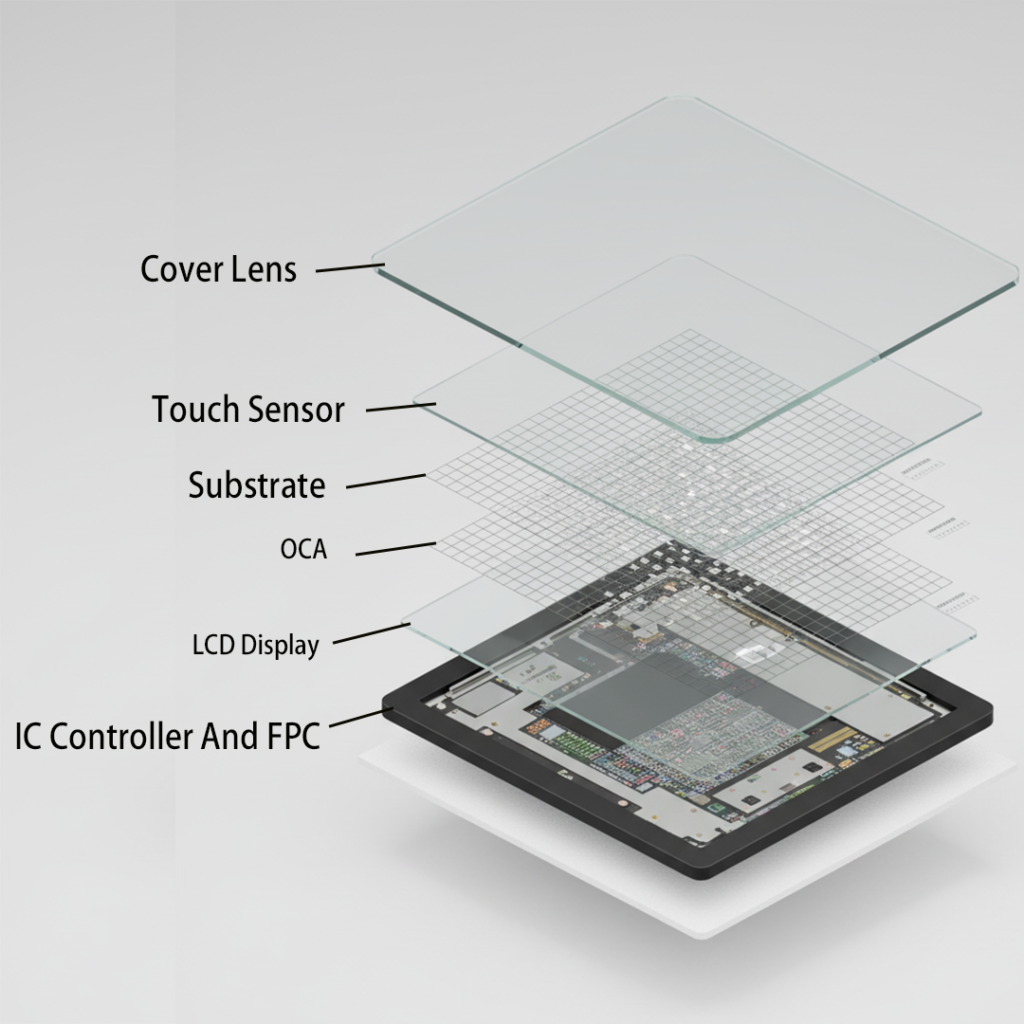
Limitations of Capacitive Touchscreens
Of course, capacitive touchscreens also have certain limitations, which in turn highlight the characteristics of their working principle:
- Higher Cost: Complex manufacturing processes, particularly for large-sized capacitive touchscreens, result in higher production costs compared to technologies like resistive touchscreens.
- Requires Conductive Input: Works perfectly with bare hands (as the human body is conductive), but cannot be operated with regular gloves, nails, pencils, or other insulating objects (specialized capacitive stylus or conductive fabric gloves are required).
- Susceptibility to Electromagnetic Interference: Performance may become unstable in environments with strong electric or magnetic fields.
- High Repair Costs: The screen is often fully laminated with the cover glass, making replacements costly if damaged, as the entire module usually needs to be replaced.
In summary, projected capacitive touchscreens dominate modern electronics, thanks to advantages like multi-touch, high sensitivity, clarity, and durability, which enable a seamless user experience.


